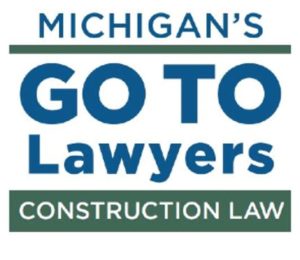(November 10, 2015) There are numerous reasons to operate a business in the form of a legal entity, such as a corporation or limited-liability company (“LLC”). Perhaps the most common reason is liability protection. By operating a business in the form of a corporation or LLC, the owners avoid personal liability, instead placing only the business and its assets at risk. There are, however, limited circumstances where Michigan courts will ignore the liability protection afforded by the corporate form and “pierce the corporate veil” to hold the individual business owner personally liable. Business owners would be wise to know these circumstances and avoid them.
While Michigan law presumes that a corporation is separate from its shareholders, this presumption – referred to as the “corporate veil” – may be “pierced” where an otherwise separate corporate existence is improperly used.1 To that end, Michigan courts will pierce the corporate veil if (1) the corporate entity was a mere instrumentality of another entity or individual; (2) the corporate entity was used to commit a fraud or wrong; and (3) the plaintiff suffered an unjust loss.2 In deciding whether to pierce the corporate veil, courts consider such factors as the undercapitalization of the corporation, the utilization of separate books, the maintenance of separate corporate and personal finances, the use of the corporation to support the fraudulent activity or illegality, the use of the corporation as an artificial shield or sham, and whether corporate formalities were honored.3 Whether or not a court will pierce the corporate veil to hold a business owner personally liable is highly dependent on the specific facts of the situation. There is no single rule establishing when a corporate entity should be disregarded, and the facts are to be assessed in light of a corporation’s economic justification to determine if the corporate form has been abused.4
As recently recognized by the Kent County Business Court in the case of Bracey v Macker Basketball, LLC, “Michigan law does not recognize…an independent cause of action” for “piercing the corporate veil.”5 Rather, it is simply a means to impose individual liability on an underlying claim involving a corporation or LLC. In the Bracey case, that meant that plaintiff Timothy Bracey’s claim to pierce the corporate veil in order to hold Scott McNeal personally liable for Macker Basketball, LLC’s alleged breach of a commission agreement had to be dismissed. The Business Court did, however, allow Mr. Bracey an opportunity to convince the Court to pierce the corporate veil of Macker Basketball, LLC, in order to hold Mr. McNeal personally liable, a task that the Court viewed as “a daunting uphill climb” in light of the facts.
Other recent cases have found sufficient cause to allow a plaintiff to pursue a “piercing-the-corporate veil” theory. For example, in Ryan Racing, LLC v Gentilozzi, Ryan Racing obtained a substantial judgment against Rocketsports Racing, Inc., after Rocketsports breached its agreement to pay racecar driver Ryan Hunter-Reay.6 Shortly before obtaining that judgment, Rocketsports’ owner, Paul Gentilozzi, transferred substantially all of Rocketsports’ assets to a newly formed company – RSR Racing, LLC – owned by Gentilozzi and his two sons. Unable to collect on its judgment against Rocketsports, Ryan Racing sued Mr. Gentilozzi, RSR Racing, and others, alleging that Rocketsports fraudulently transferred its assets to RSR and that the corporate veil should be pierced to hold Mr. Gentilozzi personally liable. In addressing the defendants’ motion to dismiss, the Court noted numerous loans and other transfers between Mr. Gentilozzi and Rocketsports, most of which were undocumented. The Court also noted that there were no meeting minutes or corporate resolutions authorizing some of the loans from Mr. Gentilozzi to Rocketsports. Given the evidence and underlying claim that Mr. Gentilozzi personally attempted to fraudulently transfer Rocketsports’ assets, the Court denied Mr. Gentilozzi’s motion to dismiss and allowed the piercing-the-corporate-veil theory to go forward.
Protecting yourself from individual liability is a main reason to form a corporation or LLC. And, in most cases, the corporate form will provide that protection. But, depending on the circumstances, that protection can be lost. Making sure you follow corporate formalities, properly capitalize the business, document transactions, and maintain separate bank accounts are ways to maintain the protection that the corporate form provides. Failing to take these steps, however, opens the door to potential individual liability.
1 Michigan case law applies these same principles to a limited liability company and its members. See, e.g., Florence v Vettraino, 292 Mich App 461, 468-69; 807 NW2d 917 (2011) (“The rules regarding piercing a corporate veil are applicable in determining whether to pierce the corporate veil of a limited-liability company”).
2 Foodland Distribs v Al-Naimi, 220 Mich App 453; 559 NW2d 379 (1996).
3 See, e.g., Int’l Union United Auto., Aerospace and Agric. Implement Workers of Am v Aquirre, 410 F3d 297, 302–3 (CA 6, 2005).
4 See, e.g., Kline v Kline, 104 Mich App 700; 305 NW2d 297, 299 (1981); Rymal v Baergen, 262 Mich App 274, 293-94; 686 NW2d 241 (2004).
5 Bracey v Macker Basketball, LLC, Case No. 14-02092-CKB, Opinion and Order Granting in Part and Denying in Part Motions for Summary Disposition Under MCR 2.116(C)(10).
6 Ryan Racing, LLC v Gentilozzi, 2015 WL 728468 (WD Mich, 2015).
More Publications


